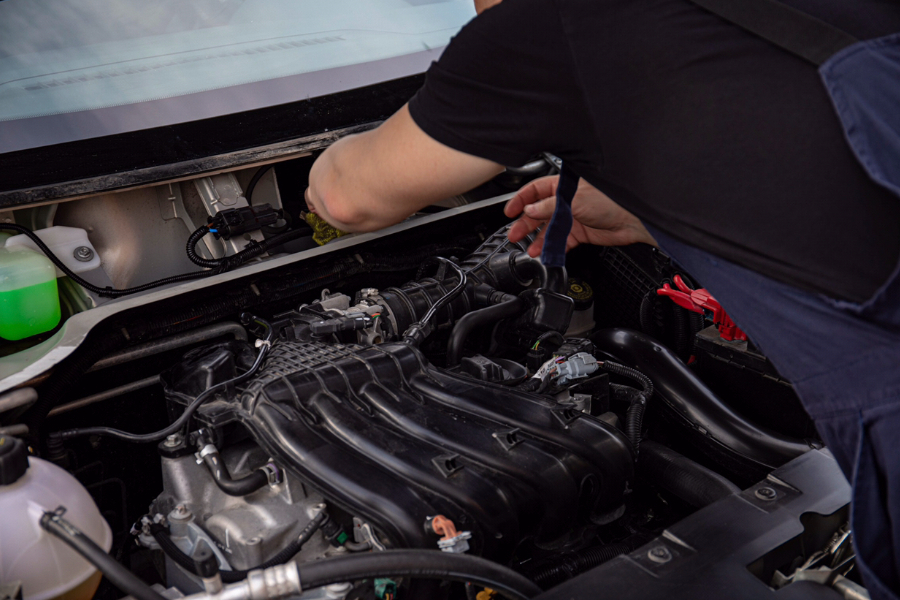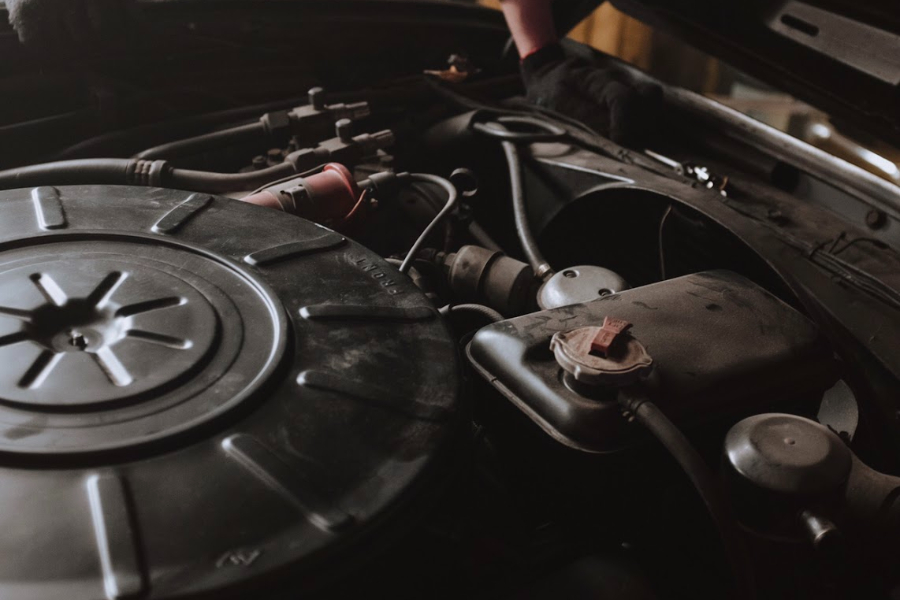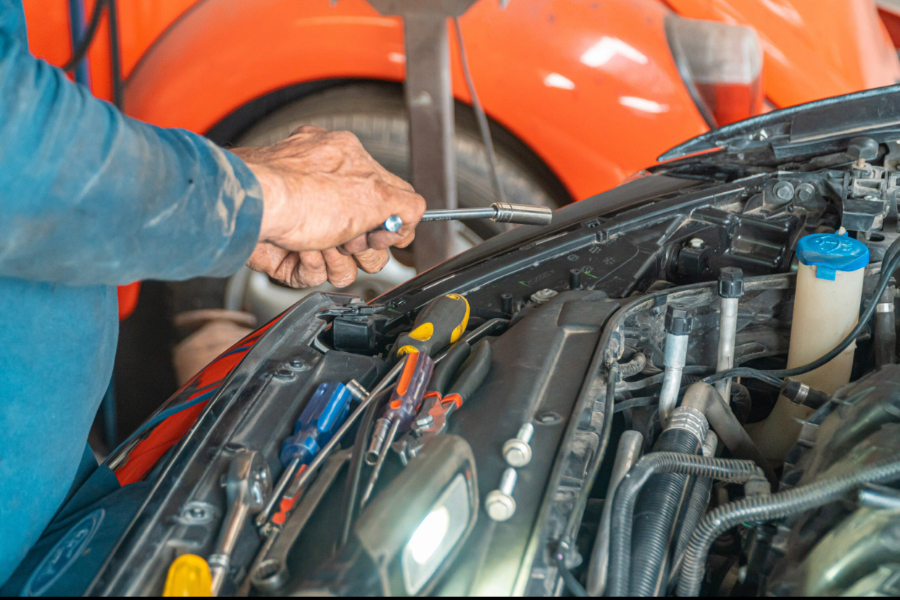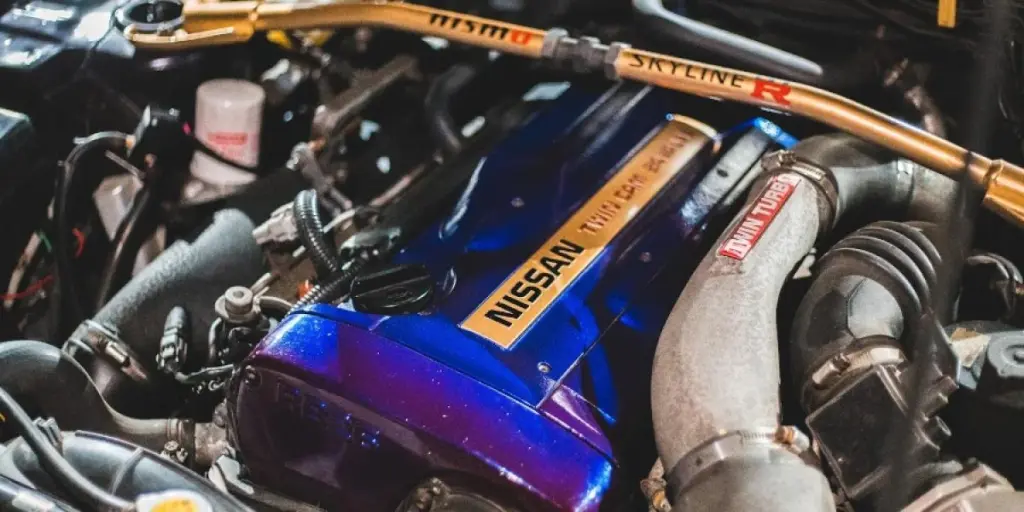The auto pump is an essential part of a vehicle that constantly circulates coolants from the radiator, through the engine, and back to the radiator. As a result, it puts the vehicle in a temperature-balanced condition, no matter the weather. Also, it’s vital to perform monitoring and diagnostics to spot faults, like engine overheating, coolant leak, rust, harmonic whining noise, etc. This article explains how retailers can perform car engine diagnostics to identify possible issues.
Table of Contents
How does a car water pump work?
What causes auto water pump failure?
How to diagnose auto water pump failure
Final words
How does a car water pump work?
Most cars’ average operating engine temperature varies from 190 – 220 degrees Fahrenheit, which can potentially exceed that range. The continuous build-up of high temperatures in cars can result in engine damage. Fortunately, car water pumps are designed to engage impellers in transporting cool water into and around the vehicle engine to avoid engine damage or overheating.
The pathway of the coolant includes the heater core, cylinder head, intake manifold, radiator, connecting hoses, and lines.

The water pump system (with the aid of an impeller blade and a centrifugal force) is designed to push cool water into the vehicle engine, circulate the water, and return it to the radiator via the hoses. Then, it repeats the process.
A car pump can either be driven by a serpentine belt, timing belt, or drive belt, depending on the design or model of the vehicle. Most car water pumps come with a weep hole, which enables a tiny amount of coolant to exit the engine. However, a frequent coolant leak could translate to seal failure, which requires immediate replacement.
What causes auto water pump failure?

A water pump failure is something that must be avoided at all costs. Vehicles with malfunctioning pumps are prone to breakdowns or overheating, and these factors may cause the following problems:
- Faulty seal: abandoning a car for a long time without running the engine can negatively impact the water pump of the car. For instance, the coolant may leak or corrode. Further, the seal could be weak, and the pump can wear out.
- Damaged or Broken Belt: When the belt cracks, the water pump may fail. Belts are usually tightened to specifications. So, if they are too tight, it increases the tension. Hence, the belt will need a tension reset or replacement immediately. And since the belt is a vital component of car water pumps, a belt failure could mean a water pump failure, which could damage the pump’s drive pulley.
- Loose Drive Pulley: A loose or wobbly drive pulley is dangerous because the vibration can cause the pulley system’s belt to wear out. Also, a loose drive pulley can result in machine failure from bearing imbalance.
- A faulty or damaged impeller or bearing causes excess heat, which could make the pump malfunction.
- Corrosion may result in fluid leaks within the cooling system. So, it’s best to use distilled water over tap water to refill the fluid to avoid contamination.
In short, consumers have to inspect the pump regularly for leakages, wear, cracks, and defects. Also, it’s essential to replace the pump andperiodically drain or flush the coolant.
How to identify a bad water pump
Some of the water pump parts, like the pulley’s bearing, can fail. The common signs that a water pump has gone bad are when the coolant is not circulating properly or when the car engine heats up easily. The tips below provide a guide on how to identify bad pumps: and

- If there are coolant drops on the floor, inspect the vehicle pump properly to trace the source. The liquid that drops from the A/C system is sometimes mistaken to be the coolant. But A/C water drops are usually colorless, while coolants are orange, red, blue, or green. And they are right under the water pump or anywhere around the pump.
- Overheating is another sign of a water pump failure. Most cars come with a temperature warning gauge that triggers when the engine is overheating. Engine overheating can also be triggered by a clogged radiator or stuck thermostat.
- Watch out for whining or grinding noise from the car engine. The noise may be an indication of a fault. Also, when the pulley or belt pulls out of alignment, it may produce an abnormal sound.
- If the coolant warning light is on and the vehicle doesn’t maintain a steady motion, there may be a leak, which points to a faulty water pump.
How to diagnose auto water pump failure
As a water pump dealer, it’s important to acquire knowledge on how to diagnose car engine issues in case customers require professional advice or services in that area.
Diagnosing water pump operation
Water pump diagnostics aim at evaluating the performance and efficiency of the pump.
- Set the transmission at neutral or automatic, then apply the parking brakes.
- Eject the radiator cap and ignite the engine.
- Allow the engine to run for close to twenty minutes to attain its working temperature.
At this point, the coolant will flow to the engine hoses. But if this doesn’t happen, it means the thermostat refused to open, or the radiator is clogged, and the water pump is faulty.
If the water pump is the issue, remove the old radiator cap, and replace it with a new one.
Then, get a rag and force it into the upper radiator hose that leads to the engine. After, check if the water pump functions by the coolant rushing out after removing the radiator’s blockage. If that doesn’t happen, use a rag to squeeze into the upper radiator hose while someone steps on the accelerator. Then, release the radiator hose to check for coolant flow. If the coolant doesn’t flow through the upper radiator hose, it is faulty and can’t circulate.
If the engine is still running, enter the passenger sector and switch on the heater to the maximum. If it does not produce any heat, it might be a stuck-closed thermostat issue, a clogged radiator, or a faulty pump.

Diagnosing bearing failure
Bearing failures put car engines in bad shape, but they are detected by the movement of the water pump shaft. Here are some diagnostic approaches for knowing pump-bearing failures and resolving them.
Bad bearings are easily spotted through the noise they make. For example, a faulty bearing squeals, howls, or produces a grinding noise when the car engine is running. The squealing or howling shows that there is a fault. Check on the pump periodically to know the state of the bearing, even when it hasn’t made any noise. Start inspecting the pump by loosening the nuts with a large screwdriver and separating the source. Then, ignite the engine.
Use one end of the hose or the sharp tip of the screwdriver shaft to make contact with the water pump housing, and position your ears very close to the other end of the screwdriver or hose. That way, it will be easier to hear the rough wheeling of the pump shaft or noises that might have been triggered by damage around the pump.
Similarly, the water pump shaft and pulley require inspection in case of irregular movements or faults. Remove the belt and manually wiggle the pulley for car models that are compatible with serpentine, timing, or drive belts. If there are signs of fault or improper movement, replace the water pump.
Wheeling the pump’s pulley by hand should make it rotate freely. But if there are signs of roughness, change the pump. The bolts should be tightened to specification, but when they show signs of loosening, replace them at once.
If the vehicle’s radiator blades are linked to the water assembly, hold the blade and wiggle carefully. Monitor the movement to determine if it needs a replacement. Also, check other parts, like the fan joints, to know whether they are perfectly fitted.
Diagnosing Seal Failure
Seal diagnosing is crucial because it helps one to know when the pump needs servicing or replacement. Also, seal problems can extend to water pump failure or coolant leaks.
When diagnosing the seal, check the pump and remove the engine cover if needed. Or get a jack stand to lift the vehicle if the pump is hidden under the vehicle’s bottom.
While analyzing the pump, check the pump weep at the bottom (sometimes found under the pulley). Also, check the radiator hose connected to the water pump, the corners of the shaft or pulley, and the mounting area.
If there are coolant remnants or dried coolants (mostly for vehicle pumps that use serpentine or drive belts), it shows the pump needs replacement provided the drops are not from above the water pump or A/C system.
Final words
Diagnosing an auto pump is essential for preventing pump hazards and keeping the engine at optimal performance. As a business owner, it’s important to understand the right vehicle diagnostic tools before commencing with diagnosis.
The inspection tips mentioned in this article will help achieve a professional car pump diagnosis, which can help to generate more income. Here are a couple of high-quality auto water pumps to check out.




